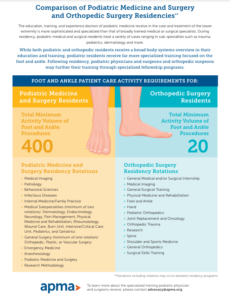
27 Jun Physician Comparison Fact Sheet
Podiatrists specialize in the medical care of the foot, ankle, and lower extremities, making them uniquely qualified to address a range of complex health issues that affect these parts of the body. Unlike general practitioners or even orthopedic surgeons, podiatrists undergo extensive training focused specifically on the foot and ankle. This specialized knowledge is critical, as these areas are intricate structures that balance the demands of bearing weight and providing mobility. Podiatrists not only treat common ailments like bunions and heel pain but also manage more serious conditions such as diabetes-related foot complications and structural deformities. Their expertise is essential for maintaining overall foot health, which can significantly impact a person’s quality of life and mobility. Therefore, while medical doctors (MDs) and doctors of osteopathy (DOs) provide broad healthcare services, the focused training and expertise of podiatrists are indispensable for patients experiencing lower extremity issues.
For a more comprehensive understanding of the differences between a Doctor of Podiatric Medicine (DPM), a Medical Doctor (MD), and a Doctor of Osteopathy (DO), consider viewing our detailed PDF. This document elaborates on the unique educational paths, areas of specialization, and the specific medical services each type of healthcare professional offers. It’s an invaluable resource for anyone looking to discern which specialist might best suit their healthcare needs, especially when dealing with conditions that affect the lower extremities.

